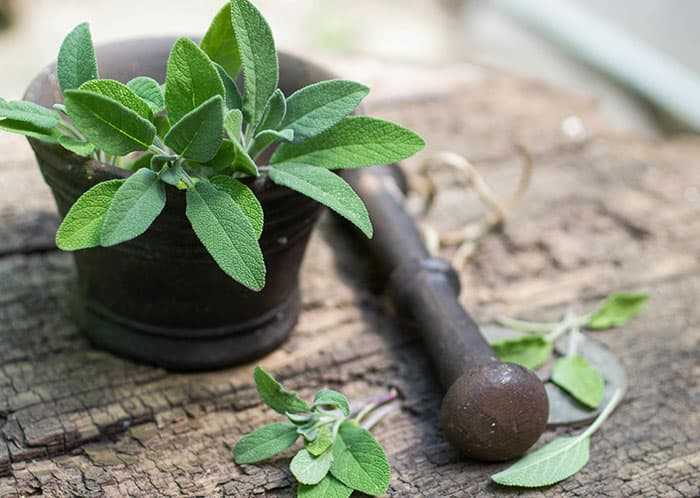What is Sage?
As with many other spices, sage has historically been used more for its medicinal benefits than for its culinary attributes. Its botanical genus, Salvia, is actually derived from the Latin salvere meaning to save or to heal. Among other powers, sage was believed to be a cure for snake bites, headaches, fevers, epilepsy, itching and even stress. During the Middle Ages, the Salerno School of Medicine in Italy coined the then-popular phrase, “Cur moriatur homo cui salvia crescit in horto?” (How can any man die who grows sage in his garden?)
Among the hundreds of species of sage, Salvia officinalis is known as “garden sage.” It is a hardy, low shrub evergreen of the mint family and is indigenous to the Mediterranean region. Tiny hairs covering the oblong leaves of the sage plant add to their gray-green appearance. Above the leaves, flowers bloom during the second year of the plant’s growth in hues from pale blue to purple. It is during this second year through the fourth year that sage leaf harvests are most abundant. Older plants often become too large and woody, and new plantings are started again after 4 – 5 years.
What is it used for today?
As an ingredient, sage is found most often in pork sausage seasonings as a common flavor profile in the United States. It is also a component of many poultry-related blends such as stuffings and gravies.
To learn more about the spices and seasonings that Fuchs has to offer, click here. Our experts are ready to educate your team on all things spices and seasonings. To find out more, contact us.




 For more information about Fuchs North America's products and programs that support food manufacturers in their product development needs, please
For more information about Fuchs North America's products and programs that support food manufacturers in their product development needs, please